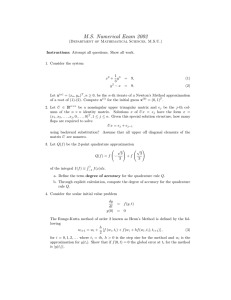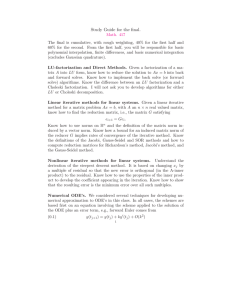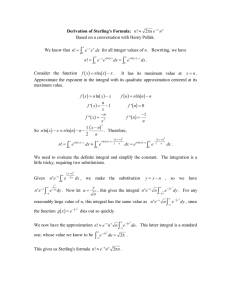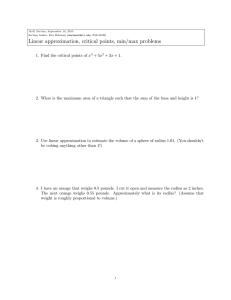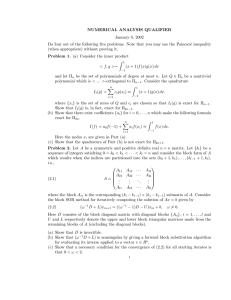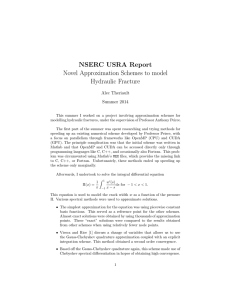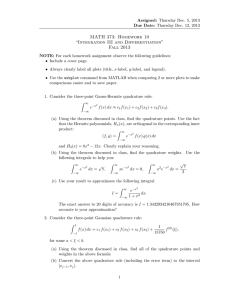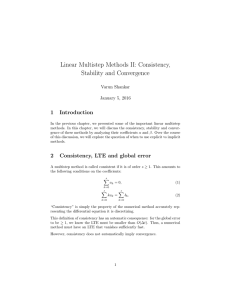Homework/Programming 11. (Due April 28)
advertisement
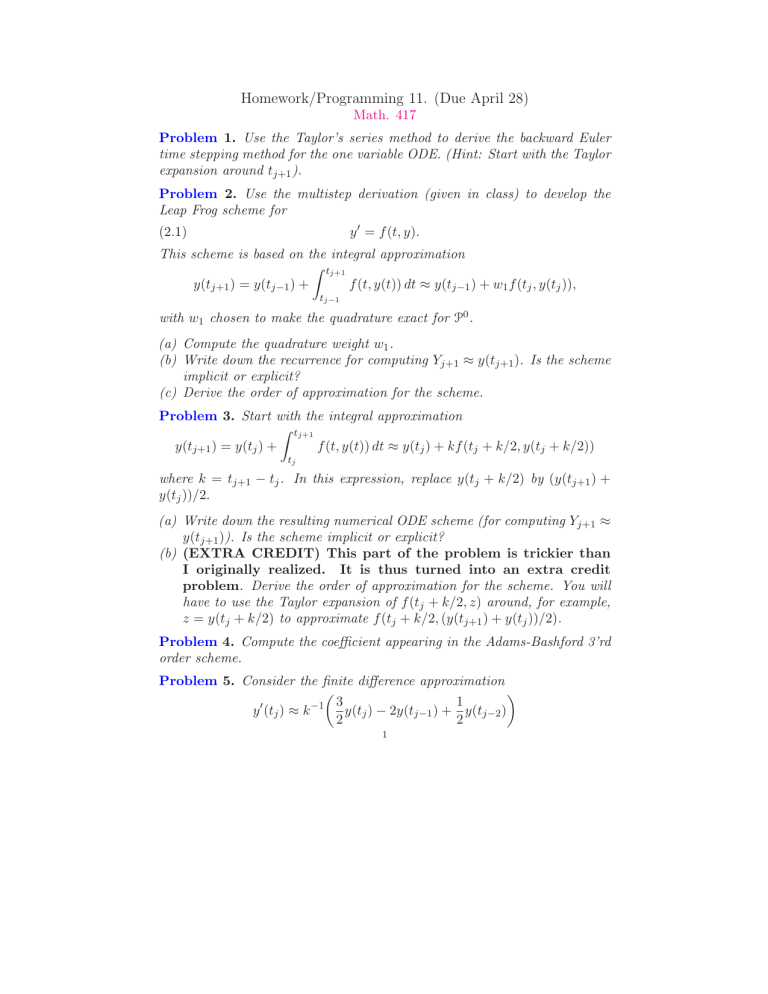
Homework/Programming 11. (Due April 28) Math. 417 Problem 1. Use the Taylor’s series method to derive the backward Euler time stepping method for the one variable ODE. (Hint: Start with the Taylor expansion around tj+1 ). Problem 2. Use the multistep derivation (given in class) to develop the Leap Frog scheme for y ′ = f (t, y). (2.1) This scheme is based on the integral approximation Z tj+1 f (t, y(t)) dt ≈ y(tj−1 ) + w1 f (tj , y(tj )), y(tj+1 ) = y(tj−1 ) + tj−1 with w1 chosen to make the quadrature exact for P0 . (a) Compute the quadrature weight w1 . (b) Write down the recurrence for computing Yj+1 ≈ y(tj+1 ). Is the scheme implicit or explicit? (c) Derive the order of approximation for the scheme. Problem 3. Start with the integral approximation Z tj+1 y(tj+1 ) = y(tj ) + f (t, y(t)) dt ≈ y(tj ) + kf (tj + k/2, y(tj + k/2)) tj where k = tj+1 − tj . In this expression, replace y(tj + k/2) by (y(tj+1 ) + y(tj ))/2. (a) Write down the resulting numerical ODE scheme (for computing Yj+1 ≈ y(tj+1 )). Is the scheme implicit or explicit? (b) (EXTRA CREDIT) This part of the problem is trickier than I originally realized. It is thus turned into an extra credit problem. Derive the order of approximation for the scheme. You will have to use the Taylor expansion of f (tj + k/2, z) around, for example, z = y(tj + k/2) to approximate f (tj + k/2, (y(tj+1 ) + y(tj ))/2). Problem 4. Compute the coefficient appearing in the Adams-Bashford 3’rd order scheme. Problem 5. Consider the finite difference approximation 1 ′ −1 3 y (tj ) ≈ k y(tj ) − 2y(tj−1 ) + y(tj−2 ) 2 2 1 2 where tj = jk and k > 0. Replacing the derivative in an ODE by the above expression leads to a multistep method (called a backward difference method). (a) Write down the resulting multistep method for computing Yj ≈ y(tj ) applied to the linear system: y : [0, T ] → Rn satisfying y′ = f (t) − Ay. Here f (t) is a vector valued function and A is an n × n matrix. (b) Is the scheme implicit or explicit? (c) Derive the order of approximation for the scheme. For this you need only consider the single variable case and may use results for the difference scheme given earlier in the semester.
